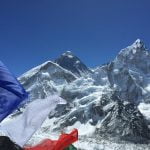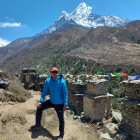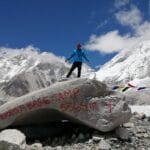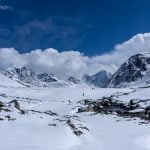Thousands of trekkers hike to Everest Base Camp every year in all four seasons. The ideal time to complete EBC also depends on the goal of your adventure.
The finest seasons for trekking are spring (March to May) and autumn (September to November), in that order. In favorable weather, you can go on a helicopter tour at any time.
The greatest time to see the mountains and landscape of the Everest region is after rainfall during the monsoon season. At that time, you would be able to enjoy the views of the mountains, which are incredibly clear.
The following are the important things to think about when undertaking the EBC Trek.
Different Seasons in Nepal
At a high elevation of 5364 meters above sea level, the EBC journey is accomplished. As such, the area provides bitterly cold and unfavorable weather. Although there is never a warm season in the Everest region, there are nevertheless significant annual variations in temperature, precipitation, and snowfall. The following lists the region’s temperature and climate by season:
Spring
The most popular months in the Everest region are the springtime months of February through May. Trekking in early spring may result in a brief rain, but otherwise the weather is dry and predictable.
Trekking and high-altitude climbs are acceptable during the springtime due to the weather and temperature. In these months, the majority of the Everest summit is completed. The weather will be ideal for you. There will be a rare chance of snowfall, a clear blue sky, and little to no rain.
Autumn/Fall
Trekking in the Everest region is most popular in the fall. Fall occurs in Nepal from September to November. The weather will be temperate enough for trekking throughout these months. During these months, the roads are typically congested.
You will get the chance to take in and enjoy the breathtaking mountain vista as well as the vibrant forest of oak and rhododendron trees. These months offer the chance to see the breathtaking peaks and mountains because the sky is clear.
Winter
In Nepal, December, January, and February are the winter months. Although it is the off-season, this is not the best time to hike to Everest Base Camp. Because of the extreme cold, you must be adequately prepared for the subfreezing weather.
Since there will be bright skies in the winter, you will get a fantastic view of the Alps. In a similar vein, the area is quieter during these months because fewer people are hiking there.
Monsoon/Summer
The monsoon season, which occurs throughout Nepal’s summer, is not the best time to visit Everest Base Camp. The weather will be rainy, which will make the path muddy and slick. In terms of weather, it is often warm and rarely rains all day.
Consequently, rain won’t prevent you from reaching your goal if you wish to hike during these months. When the EBC trek is at a greater altitude, the rain won’t impact you like at a lower altitude.
Final Say
In conclusion, the exciting Everest Base Camp Trek leads to the world highest peak. This camp is reachable by foot in the spring and autumn. Even though it gets congested during these seasons, the journey is worthwhile.
But you can choose summer or winter if you’re looking for adventure and peace. Every season has a cost associated with it. Decide on the option that you feel most at ease with. Enjoy your journey and create treasured memories.




